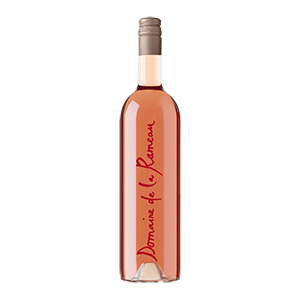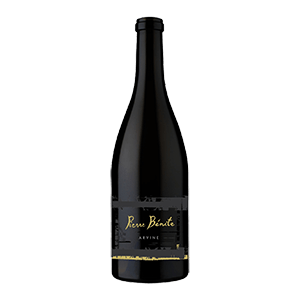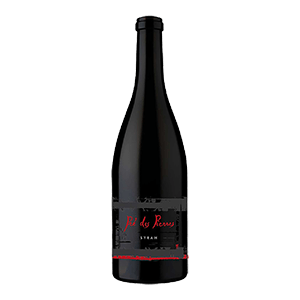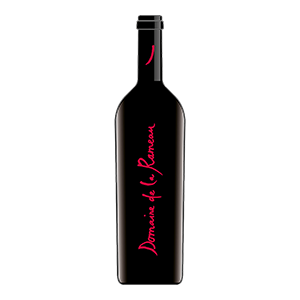 |
 |
 |
 |
 |
||||
| Rose | Petite Arvine | Syrah | Cornalin | Domaine de la Rameau |
Vintage
2023
The year 2023 experienced exceptional weather conditions and a scorching summer. It was also characterized by a very low level of precipitation throughout the growing season and grape ripening. Coupled with the high temperatures, this phenomenon favored high evaporation, significantly accentuating the water deficit in the soil and making it necessary, in certain situations, to irrigate more than usual.
These hot and dry climatic conditions particularly benefited the vines and were very unfavorable for fungal diseases and other pests. After budburst in mid-April, the vine grew quickly and continuously. Flowering began in mid-May, two weeks ahead of the ten-year average, and the harvest began at the end of August.
With 26 million kilos of red grapes and 20 million kilos of white grapes, the 2022 Valais harvest is close to that recorded in 2019 and 10% higher than the ten-year average. As a reminder, the very poor 2021 harvest, heavily affected by frost and mildew, produced 22.7 million kilos.
The natural sugar contents of the 2023 vintage are close to the ten-year averages for Chasselas (81 °Oe), Sylvaner (94 °Oe), Pinot Noir (95 °Oe) and Gamay (95 °Oe).
The quality of the wines is very promising. A somewhat surprising freshness for this warm and early vintage gives them energy and vitality, balancing the deliciousness in a very delicate way.
The white wines have character with a beautiful aromatic exuberance. On the palate, the fruitiness is bright, combining floral notes and ripe fruits, while revealing an astonishing freshness. The red wines are full-bodied yet subtle. They express themselves in a rich palette of black fruits and warm spices, with beautiful silky and melted tannins.
2022
The year 2022 was characterised by exceptional weather conditions and a scorching summer. It was also characterised by a very low level of rainfall throughout the vegetation and grape ripening period. Coupled with the high temperatures, this phenomenon favoured high evaporation, greatly accentuating the water deficit in the soil and making it necessary, in certain situations, to irrigate more than usual.
These hot and dry weather conditions particularly benefited the vines and were very unfavourable to fungal diseases and other pests. After budburst in mid-April, the vines grew rapidly and continuously. Flowering began in mid-May, two weeks ahead of the ten-year average, and the harvest began at the end of August.
With 26 million kilos of red grapes and 20 million kilos of white grapes, the 2022 Valais harvest is close to that recorded in 2019 and 10% above the ten-year average. As a reminder, the very low 2021 harvest, heavily affected by frost and mildew, produced 22.7 million kilos.
The natural sugar content of the 2022 vintage is close to the ten-year average for Chasselas (81 °Oe), Sylvaner (94 °Oe), Pinot Noir (95 °Oe) and Gamay (95 °Oe).
The quality of the wines is very promising. A somewhat surprising freshness for this hot and early vintage gives them energy and vitality, balancing the greediness in a very delicate way.
The white wines have character with a beautiful aromatic exuberance. On the palate, the fruitiness is brilliant, combining floral notes and ripe fruit, while revealing a surprising freshness. The red wines are full-bodied yet subtle. They express themselves in a rich palette of black fruits and warm spices, with beautiful silky and melted tannins.
2021
The year 2021 was a rare challenge for the winegrowers. Just as the vines were starting to bud, the nights of 6 and 7 April saw persistent cold which caused frost damage, particularly to early budding grape varieties such as Cornalin and Arvine.
Throughout the vegetation period, from May to July, there was a succession of climatic hazards, notably hail and very heavy rainfall, which favoured the development of diseases, particularly mildew. The incessant rainfall in July and the rare windows of dry weather made plant health control particularly difficult. Depending on the grape variety and the sector, the winegrowers could only observe the extent of the damage caused by mildew to the harvest.
The harvest was particularly late. They were spread out over the whole month of October. The severe sorting of the harvest and the elimination of damaged or under-ripe grapes increased the time needed for harvesting tenfold, but allowed for good quality grapes.
A sustained acidity gives the wines of the vintage a jovial freshness. The white wines display an intense fruitiness where elegance and vivacity are combined. The red wines, dressed in a bright and intense colour, reveal charming aromatic expressions of fruit and spices and generous concentrations. Wines full of audacity that promise all sorts of pleasures.
2020
The weather conditions were favourable from the end of March, leading to an early start to vegetation. Flowering and veraison started a week ahead of the ten-year average. The growth of the vines was heterogeneous depending on the sector and the grape variety.
The favourable conditions at the beginning of the season made it possible to delay the first treatments against fungal diseases. Alternating rainy and dry spells accompanied by high temperatures in July and August led the winegrower to intervene to protect the harvest.
The harvest officially opened on 11 September and took place in favourable weather conditions with a quality of grapes requiring very little sorting.
The hot and dry climate of the first part of the harvest contrasted with the coolness and humidity that set in at the end of September. We therefore find wines with different balances depending on the plots and the harvest dates chosen by the winemakers. The first tastings reveal greedy, fine wines with very good concentrations.
2019
2019 can be described as a demanding year for winegrowers. Although the mild weather conditions in February and March allowed vegetation to start early, the unusually cool weather in May slowed it down considerably. Flowering started a week later than the ten-year average.
The hot weather in June and July contributed to a sustained development of the vines. During the summer, numerous storm fronts swept across Switzerland, creating favourable conditions for the development of fungal diseases. The Valais was hit by three hail storms, causing light to medium damage locally.
The dry and sunny weather of September allowed to erase the heterogeneity of the maturity. The harvest was officially opened on 23 September. After a cool and changeable start to October, they took place in an Indian summer atmosphere. The particular climatic conditions of the summer necessitated sorting the grapes in the vineyard.
The alternation of warm days and cool nights in September allowed the aromatic potential to be preserved. A welcome freshness and a sustained and preserved acidity give energy and dynamism to the wines which are powerful and fleshy.
The white wines have an exuberant bouquet of fresh fruit, with marked typicity. On the palate, they are crisp and lively, with a bright, dynamic and aromatic fruitiness. The red wines reveal a rich palette of colours, ranging from ruby red to purple red with purple highlights. They offer a basket of black fruits and spices, with well-presented tannins and a nice fresh and fruity structure.
2018
The year 2018 was characterised by a marked lack of rainfall throughout the vegetation and ripening period. These hot and dry weather conditions were particularly beneficial to the vines and were very unfavourable to fungal diseases and other pests.
Officially opened on 10 September, the harvest lasted four weeks and took place in very good weather conditions. The irreproachable sanitary state allowed the harvesting of high quality grapes.
The 2018 vintage is a reflection of the past wine season. The hot summer conditions allowed the production of healthy grapes with optimal ripeness. The alternation of warm days and cool nights in September helped preserve the aromatic potential of the wines. At harvest time, the berries were small due to the hot and dry summer. This phenomenon allowed a remarkable concentration of sugars, aromas and colouring matter.
An unexpected and surprising freshness gives energy and vitality to the wines. They are powerful, fleshy and display an insolent and dynamic opulence, which is exceptional for a hot and early vintage.
The white wines offer a beautiful exuberance in the perfumes and aromas. On the palate, the fruitiness is brilliant, combining floral notes and ripe fruit while retaining a surprising freshness. The red wines reveal a rich palette of black fruits and warm spices with beautiful, silky, melted tannins.
2017
The year 2017 started with the coldest January in 30 years. In contrast, March was unusually warm. The high temperatures combined with good sunshine contributed to the early development of the vegetation. The vines broke bud ten days earlier than the ten-year average.
April was marked by severe night frosts on the nights of 19 to 23 April, which caused considerable damage to the vineyard, given the advanced development of vegetation for the period.
The month of June was particularly warm and favourable to the growth of the vines and allowed the development of healthy foliage. On August 1st, an exceptional hail storm hit the vineyard locally. The warm weather conditions of August contributed to the production of high quality grapes.
The harvest began on 11 September and took place under very good weather conditions, marked by a virtual absence of rainfall (a quarter of the ten-year norm for September and October) and ended in October under an Indian summer.
The hot summer conditions allowed the production of healthy grapes at optimum ripeness. The warm days and cool nights of September allowed the aromatic potential to be preserved and the acidity of the grapes not to be degraded. At harvest time, the berries were small due to the hot, dry summer. This allowed a remarkable concentration of aromas and colour in the red wines.
The first tastings reveal generous wines with very good balance and freshness, which is exceptional for a "hot and early" vintage. The white wines show a beautiful exuberance, combining floral notes and ripe fruit while maintaining a dynamic freshness. The red wines are greedy, opulent with voluminous tannins and magnificent colours. In summary: promising wines with character, reflecting the terroir and the sunny climate of the 2017 vintage.
2016
The weather conditions at the beginning of the summer required constant vigilance on the part of the winegrowers to control fungal diseases, particularly mildew. From the end of July, hot and particularly dry conditions prevailed throughout the vineyard. This long heat wave made it necessary in certain situations to irrigate more than usual.
These conditions lasted until the harvest officially opened on 26 September. The heterogeneity of maturity between the grape varieties and the situations in the vineyard lengthened the usual duration of the harvest. As in 2015, the irreproachable sanitary state allowed the harvest of high quality grapes.
The winegrowers experienced a special harvest, very spread out, with contrasting maturities depending on the grape varieties and the parcel situations. The choice of harvest date was a determining factor for the quality of the wines. We had to be patient to harvest at the optimum time. However, the warm days and cool nights allowed us to preserve the aromas.
The first tastings reveal wines marked by freshness, elegance and finesse.
Tasting is crucial in deciding on the vinification choices. The high acidity of certain whites required malolactic fermentation on a case-by-case basis. This year, the work on the lees is very important to structure the wines. The white wines are particularly fresh and tasty with a nice tension on the finish that gives them an airy quality.
The red wines are very colourful and attractive. The acidity and tannic structure vary greatly from one grape variety to another, depending on the ripeness obtained. The bouquet is expressive of spices and red and black fruits. The tannins are firm, well present and coated. Red wines of pleasure and freshness.
2015
The beginning of veraison occurred for the first period grape varieties one week ahead of the 2014 vintage. The dryness of July allowed the installation of a moderate hydric constraint sought in the ripening phase of the grapes.
The rapid accumulation of sugars led to an early start to the harvest, on 8 September 2015. The harvest benefited from sunny and dry weather. After a very demanding 2014 vintage in terms of sorting, the winemakers appreciated the very good quality of the grapes this year.
The warm days and cool nights of September allowed the grapes to ripen regularly, which is a guarantee of quality. The first tastings reveal stunning wines in both the whites and the reds. They are warm, fleshy, very aromatic, charming and greedy.
The red wines are distinguished by their deep, dark colour. The bouquet is intense with aromas of ripe black and red fruits sprinkled with spices. Powerful, generous and concentrated, the palate unfolds with a solid structure, supported by coated and silky tannins.
The choice not to carry out malolactic fermentation in the whites has enabled them to retain a dynamic freshness. They have an expressive fruitiness of ripe fruit balanced by a refreshing acidity. Beautifully balanced white wines, full of opulence and freshness. The power and strength of Petite Arvine in this sunny vintage reveal notes of pink grapefruit and ripe citrus.
2014
A capricious summer required the winegrowers to pay constant attention to fight effectively against the development of diseases such as powdery mildew and to ensure a quality harvest. The weather conditions in September and October were optimal for the ripening of the grapes and favoured a good accumulation of sugars. The cool nights allowed the grapes to preserve their full aromatic potential.
During the harvest, the winegrowers carried out important sorting work in the plots for the sensitive grape varieties. The damage noted on certain plots was essentially due to the summer rainfall. This harvest was also marked by the presence of the drosophila suzukii.
The first tastings augur well for a quality vintage. Thanks to the sorting work carried out in the vineyard, a quality harvest was put into the cellar. The wines offer well-marked typicity with balanced structures and aromatic palettes with a great deal of finesse.
The whites reveal a bright fruitiness, freshness and balance. The typical characteristics of Petite Arvine are particularly present in this 2014 vintage. The colour intensity of the reds is remarkable, with deep, dark colours ranging from ruby red to purple. The bouquet is expressive, revealing notes of red and black fruits with a touch of spice. On the palate, there is a concentration of fruit, tight and silky tannins, and a nice vivacity on the finish.
2013
July and August were splendid, apart from a few violent storms accompanied by localised hail. The most significant damage was recorded on 8 July in the Saxon vineyard. According to MeteoSuisse, this was the seventh hottest summer since the introduction of national measurements in 1864.
September was favourable for the ripening of the grapes, with very good conditions at the beginning and end of the month. The grapes ripened slowly, which had a positive effect on the aromatic and phenolic potential. The harvest officially began on 7 October and was completed in the first days of November. This is the latest vintage since 1995.
After a series of hot years, this 2013 vintage is characterised in particular by a higher total acidity. This brings a welcome freshness to our wines. The wines that have finished fermenting reveal remarkable qualitative aromatic profiles. The typicity of each grape variety is very present.
The whites are fresh and lively. The fruitiness is brilliant. The palate is structured with a beautiful freshness on the finish. The reds have intense and deep colours. The bouquet is exuberant with notes of fresh fruit and spices. On the palate, there is a beautiful harmony between the fruit, the tannins and the acidity.
2012
The tastings indicate a good aromatic potential, an interesting structure with a very present varietal typicity. The Petite Arvine reveals all its aromatic power with its intense notes of pink grapefruit and citrus fruits. A nice surprise also for the Païen which expresses a virile character and a welcome freshness. The Fendant is characterised by a marked minerality, a fruity and floral character, all in subtlety. The Pinot Noir and the Gamay benefited from good harvesting conditions. We find aromas of red fruits, spices and undergrowth. The tannins are supple and mellow with a nice fresh finish. The Cornalin, with its intense and deep colour, offers a palette of spices and black fruits: a very good concentration for this emblematic grape variety. A vintage full of promise.
2011
The whites are very expressive with intense ripe fruit and floral aromas. One can sense that the harvest was carried out at full maturity. The palate is fleshy, full-bodied, structured with a welcome acidity that underlines the fruity and floral sides. To keep this freshness and vivacity, the whites have often been vinified without secondary fermentation, which brings balance and harmony to the whole. Some of our whites have extraordinary aromatic expressions, notably the Petite Arvine which is remarkably typical of this vintage.
The reds surprise us with their dark, dense and deep colour, with intense bouquets of black and red fruits and warm spices, with a warm, structured palate with massive but already silky and well coated tannins. One can also sense a very ripe grape at harvest time. Red wines of character, with a beautiful presence and power but all in harmony.
2010
In 2010, the climate showed sharp and important variations during the whole vegetative period (April to September). After a month of April marked by drought and very high temperatures, a cool period set in during the first half of May. This month recorded three times more rainfall than the 30-year norm (1961-1990). A second wave of cool weather occurred in mid-June, when the micoteau vines were in full bloom. The end of the summer was characterised by normal temperatures. The mild conditions in September and October once again allowed for a healthy and optimally ripe harvest.
A favourable weather during the harvest, a few days of foehn, a perfect sanitary state, quality grapes with high soundings and a beautiful and frank acidity let predict a remarkable vintage 2010. The first wines tasted show the promise of a vintage of character with white wines that reveal beautiful and very expressive aromas, a marked personality and a remarkable typicity. They are fruity, structured, tonic with an acidity that brings freshness and life. The reds have an impressive colour intensity, the robe is dense and deep. They reveal a beautiful palette of ripe red and black fruit aromas, with well-presented tannins, a nice opulence brought on by the alcohol but all well balanced by a refreshing acidity.
These are expressive and structured wines, without heaviness, with a beautiful harmony.
